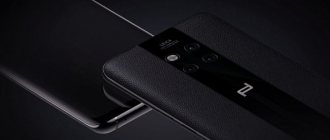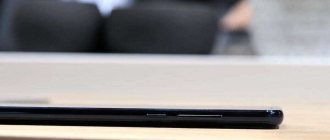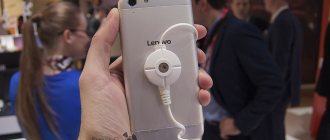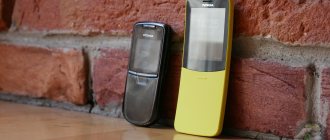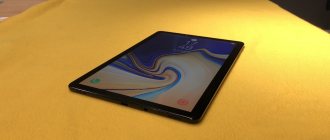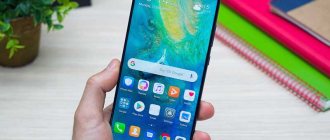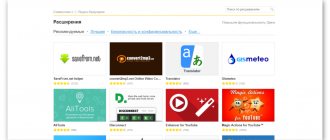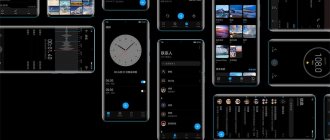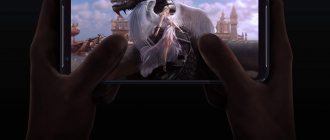Huawei Mate 9 Pro is an intermediate model between the Mate 9 and Porsche Design, which were presented in the fall of 2016. With the release of such gadgets, Huawei proves how much the company has grown in recent years. A premium device with a beautiful design, the latest hardware and well-optimized software - all this speaks for itself. The editors of the GSMArena portal prepared a review of this smartphone, and we translated it for our audience.
The best Telegram channel about technology (possibly)
Specifications
- Screen: 5.5 inches, AMOLED, 534 ppi, 2560×1440 pixels, Gorilla Glass 3.
- Operating system: Android 7.0 Nougat (Huawei EMUI 5.0).
- Processor: Kirin 960, eight-core: 4×Cortex-A73 (2.4 GHz) + 4×Cortex-A53 (1.8 GHz).
- GPU: Mali-G71 GPU, eight-core.
- RAM: 6 GB.
- Built-in memory: 128 GB, no microSD card slot.
- Main camera: dual Leica certified - 20 MP (monochrome sensor) and 12 MP (color sensor); f/2.2, 4-in-1 hybrid autofocus, dual LED flash; Video recording 2160p at 30 FPS and 1080p at 60 FPS.
- Front camera: 8 MP (f/1.9), 1080p video recording at 30 FPS.
- Battery: 4,000 mAh, lithium polymer, non-removable.
- Dimensions: 152×75×7.5 mm.
- Weight: 169 g.
- SIM slots: 2 nanoSIM.
- Communications: LTE-A (up to cat. 12, 600 / 150 Mbit/s), USB Type-C, Wi-Fi a/b/g/n/ac, GPS / GLONASS / Beidou / Galileo, IR port, no FM radio.
- Sensors: light, gravity, proximity, gyroscope, digital compass, fingerprint sensor.
- Available colors: gold and black.
- Cost at the time of testing: about 50 thousand rubles on the gray market.
Compared to the regular Mate 9 (5.9 inches), the display is significantly smaller, but it is curved at the sides. Thanks to this, the Mate 9 Pro can be called a regular smartphone, and not a huge phablet. Many will be disappointed by the lack of a microSD card slot, but this is compensated by the presence of 128 GB of memory. There is also no protection against water and dust, as in other Huawei products - the company is still ignoring this technology.
Huawei Y9 (2019) review
This model is the oldest of Huawei's entire line of inexpensive phones. The device is equipped with a large screen, bezel-less appearance and 4 cameras. Its show took place in October of this year, and the model hit the international market just a few days later.
Equipment
- Smartphone;
- Long USB cord;
- Instructions;
- Guarantee;
- Clip for working with Dual SIM;
- Protective cover made of plastic;
- Charger.
Design and ergonomics
Both parts of the shell of the new model are made of 2.5D glass, and they are connected by a frame made of metal materials. This makes the smartphone look very expressive. The large display takes up almost the entire space of the title section. Its profile frames are very thin. On the lower side, the protrusions are also extremely trimmed. At the same time, in the upper part you can see a “unibrow”, which is quite wide.
As mentioned, even the back is covered with a protective layer of glass with flat edges. The vertical module with a dual camera is located at the top, in the left corner. Just below you can see an LED flash. There is a fingerprint sensor on the back cover that identifies the owner's touch in a matter of seconds, allowing you to instantly unlock. On the bottom edge there are almost all the main elements in the form of a MicroUSB socket, a headset jack, an audio speaker and a microphone.
The gadget does not feel very comfortable in the hand, since the shell is absolutely smooth. But the manufacturer of the productive device tried to minimize the impact of the glass coating on the comfort of use through “smart” assembly.
The new product is available in three colors:
- Black;
- Violet;
- Blue.
The dimensions of the device are 162.4 x 77.1 x 8.1 mm, and the weight is 173 g.
Screen
The model is equipped with an IPS LCD display with a diagonal of 6.5 inches. The aspect ratio of this screen is 19.5:9. The matrix has a resolution of 2340x1080 px, which makes the picture extremely detailed. The display is covered with elegant and reliable 2.5D protective glass. The screen quickly becomes covered with fingerprints and other marks, which is why it needs to be cleaned regularly.
In reviews, users advise to immediately buy a protective film.
It is worth noting the excellent degree of contrast, which makes the image very rich and natural. There are no difficulties with the review, since the angles are very close to the maximum parameters. You can adjust the sharpness personally, based on readability in the sun, or allow automatic adjustment.
Filling
The new product has an 8-core processor from Kirin, which supports AI. This chip is based on 4 regular A53 cores from Cortex, clocked at 1.7 GHz. For active games, we installed an additional cluster consisting of 4 A73 cores of the same Cortex. But in this case the clock frequency is 2.2 GHz. To watch videos and work quickly on the Internet, there is a G51 MP4 graphics processor from Mali.
The usual modification of the phone is equipped with 64 GB of ROM and 4 GB of RAM. The improved version has 128 GB of internal memory and 6 GB of RAM. If you plan to use the phone for heavy games, then you can increase the memory by installing a microSD flash drive with a capacity of up to 400 GB. It is worth noting that the new product was equipped with a battery with a capacity of 4,000 mAh to achieve maximum autonomy.
Sound, communication, fingerprint scanner
The sound of multimedia is also good. There is only one speaker, but it is quite loud, and without annoying disruptions in the high frequency range. In general, this is an excellent indicator for games and TV series. As for the sound in the headset, it is the most typical. It is worth noting that the model has a mini-jack, and this is now considered a huge plus.
The fingerprint sensor, which is located on the back, functions quickly, but the face recognition sensor is very “thoughtful”, although quite accurate if used exclusively during the day.
Smartphone owners speak extremely unfavorably about using a face identification scanner at night.
There is an NFC block, which means that owners of the new product can pay for the purchase of tickets on transport, including trips on the subway, where there is appropriate support. The performance of 4G and the Wi-Fi module does not cause any complaints.
Camera
But the camera of the new product truly deserves praise. The 20 MP main unit with aperture 2.0 allows you to take fairly good pictures in conditions where there is enough lighting. Otherwise, blurring will form, and you won’t be able to “click” a decent photo instantly. You need to stand in one place, concentrate and hold the phone calmly. By the way, in the operation of the camera, in particular at night, the “lags” of the system are quite noticeable.
In addition to the usual “Video” and “Photo”, the program has a portrait mode with different processing scenes - somewhat reminiscent of the tenth iPhone. An additional camera with a 2 MP module is necessary to indicate the depth of the image and separate the subject from the background. In this mode, the quality of the frames is at a “so-so” level due to active noise reduction, but if there is enough light, then it is possible to take a couple of cool portrait photographs.
The model also has 2 front cameras with 24 and 2 MP (optional) modules, which allow you to take excellent selfies with background blur. In addition, there are animated emojis, different backgrounds and decorations for fans of such effects. The pictures taken with the front camera are good, there is even a fairly powerful flash on the display.
While working with the main camera, AI is turned on, although these are probably specific algorithms, and most often artificial intelligence only adds contrast. The maximum video quality is Full HD, and the recording speed is 60 FPS. There is electronic stabilization, but it only functions during recording at 30 FPS. The quality of pictures and videos on this phone is acceptable, no supernatural results, but nothing bad either. In general, the camera corresponds to the cost of the smartphone itself.
Interface
There is an Android 8.1 shell with a proprietary EMUI 8.2 interface. According to AnTuTu tests of the seventh version, the gadget reaches approximately 138 thousand points. For such a price this is an excellent value. In fact, things are going very well with the response of the functionality. For example, most tasks are completed almost instantly.
Programs launch really quickly. In rare cases, the startup interval is slightly longer, in particular if you open very “heavy” games. In this regard, it is recommended to open the ninth Asphalt or PUBG on medium graphics settings. Other applications with less demanding conditions can be played without any limits.
The interface itself is far from the pinnacle of attractiveness, but, as they say, it’s not for everybody. In any case, its flexibility makes it possible to configure the phone as the user pleases, even turning it into “pure” Android. For example, you can install your favorite theme, Nova Launcher, Pixel-type icons and end up seeing a fairly innovative gadget with an attractive shell.
Autonomy
Huawei equipped this model with a fairly powerful battery with a capacity of 4,000 mAh. This gives excellent operating time, since the hardware is not budget-friendly, and the software is innovative. The power of the output adapter is 5 volts (2A).
Company representatives also talked about fast charging technology. The manufacturer has not lifted the curtain on the name of the latter, but it would be logical to predict that it will be the branded Super Charge 2 or something from this category. Formal testing of the operating time has not been carried out, but we can say with confidence that the smartphone will work at its full capacity from 10 to 12 hours.
Advantages and disadvantages
Advantages:
- Large display with excellent resolution;
- Very trendy design;
- 2 dual cameras;
- Good performance indicators;
- Powerful battery.
Flaws:
- There is no USB type “C” socket;
- No FM radio;
- The case gets dirty quickly.
Equipment
Huawei Mate 9 Pro comes in packaging that leaves no doubt about the premium nature of the gadget. Opening the beautiful black box with the Huawei and Leica logos, we are immediately presented with the smartphone itself in all its glory. Below it, in two compartments, there is a powerful 22.5 Watt charger, a proprietary USB Type-C cable, an adapter from microUSB to USB Type-C, headphones, a SIM card ejector and a silicone case.
Huawei Y – series, compatibility of cases and glass
| Model | Compatibility Cases | Compatibility Glass |
| Huawei Y9 (2019) | Compatible: Huawei Enjoy 9 Plus | Compatible: Huawei Enjoy 9 Plus |
| Huawei Y7 (2019) | No | No |
| Huawei Y7 Prime (2018) | Compatible: HuaweY7 Prime, 7C Pro, Y7 2018 | Compatible: HuaweY7 Prime, 7C Pro, Y7 2018 |
| Huawei Y7 (2018) | Compatible: Huawei Y7 Prime 2020, 7C Pro | Compatible: Huawei Y7 Prime 2020, 7C Pro |
| Huawei Y6 Pro (2019) | Compatible: Huawei Y6 Prime 2020, Honor 8A, Y6 2019 | Compatible: Huawei Y6 Prime 2020, Honor 8A, Y6 2019 |
| Huawei Y6 Prime 2018 | Compatible: Huawei Honor 7A Pro, Y6 2018 | Compatible: Huawei Honor 7A Pro, Y6 2018 |
| Huawei Y6 2018 | Compatible: Huawei Honor 7A Pro, Y6 Prime 2018 | Compatible: Huawei Honor 7A Pro, Y6 Prime 2018 |
| Huawei Y5 2019 | Compatible: Huawei Honor 8c | Compatible: Huawei Honor 8c |
| Huawei Y5 2018 | Compatible: Huawei Y5 Prime 2020, Honor 7A. | Compatible: Huawei Y5 Prime 2020, Honor 7A. |
| Huawei Y5 2017 | No | No |
| Huawei Y5 II | No | No |
| Huawei Y7 Prime | Compatible: Huawei Y7 Prime 2018 | Compatible: Huawei Y7 Prime 2018 |
| Huawei Y7 | Compatible: Huawei TRT-LX1 | Compatible: Huawei TRT-LX1 |
| Huawei Y6 Pro | No | No |
| Huawei Y6 II | No | No |
| Huawei Y3 2017 | No | No |
| Huawei Y3 II | No | No |
| Huawei Y625 | No | No |
| Huawei Y530 | No | No |
| Huawei Y511 | No | No |
| Huawei Y320T | No | No |
| Huawei Y300 | No | No |
Appearance
Left - Mate 9 Pro, right - Mate 9
Despite the fact that the Huawei Mate 9 Pro does not receive the Porsche Design nameplate on the front panel, the smartphone still boasts a stylish appearance. The display, curved on the sides, immediately attracts attention. Together with the Home button on the front panel, the result is almost an exact copy of the Samsung Galaxy Note 7. Huawei’s desire to lure away the audience of Samsung phablets is quite logical, because the last model in the Galaxy Note line was, to put it mildly, a failure.
Left - Mate 9 Pro, right - Galaxy S7 Edge
There is a large 5.5-inch screen on the front panel. Above it is a speaker. A light sensor is hidden under its mesh. To the left of the speaker grid is a small black dot called the proximity sensor. There is also an LED sensor for notifications and a front 8-megapixel camera.
Below the screen are three pressure-sensitive Android control buttons. In the middle is the Home button, which is not a button at all. You can't press it - it's a small touch screen that responds to taps. A very fast fingerprint scanner is integrated into this “button”.
The Home button can be customized to your liking. For example, you can turn off the two illuminated buttons on the sides and leave only one. Using it, you can perform the actions of the other three: one tap goes back, a long tap goes to the desktop, a gesture to the left or right will open a list of recent applications. Made in the style of the Meizu mTouch button, but only even better.
On the left side there is a tray for nanoSIM cards, on the right there are buttons for volume control and locking. There is only one infrared sensor on the top side, but the bottom is quite crowded: a USB Type-C port, a speaker grille and a 3.5 mm analog audio jack.
And finally, two camera sensors are located vertically on the back cover - a 12-megapixel color and a 20-megapixel monochrome. They are helped by a laser and a two-tone flash.
While the front panels of the Mate 9 Pro and Galaxy S7 edge are almost identical, the back covers are completely different. All because of the dual camera and plastic strips for antennas. The latter resemble HTC flagships. The back panel material is also completely different, even compared to the regular Mate 9 - it's polished metal with a “cleaned” texture. It is very pleasant to hold the device in your hand.
From a design point of view, Huawei Mate 9 Pro is far from original, but the Chinese have worked hard on the body materials and ease of use - all of this is top notch.
Huawei Y9 (2018) - specifications, review, photos
Huawei Y9 (2018) smartphone specifications:
- Screen: 5.93 inches, IPS matrix, FullHD+ resolution, 18:9 aspect ratio, 403 PPi, 74% screen occupancy, 2.5D glass
- Processor: eight-core HiSilicon Kirin 659 chip with an operating frequency of 2.36 GHz
- Graphics accelerator: Mali-T830 MP2
- RAM: 3GB, LPDDR3
- ROM: 32 GB with support for cards up to 256 GB
- Antutu: 60,000 points
- Number of SIM cards: 2
- Networks: 2G, 3G, 4G
- Connector type: Micro USB 2.0
- Fingerprint scanner: yes
- Cameras: front – 16+2MP, f/2.2+f/2.4, rear camera – 13+2MP, f/2.2+f/2.6
- Shell material: aluminum alloy
- Dimensions: 75.3x157.2x7.89
- Weight: 170 g
- Colors: blue, gold, black
- Battery: 4,000 mAh, non-removable, fast charge
- OS: Android 8.0 Oreo. EMUI 8.0
- Price: $250
Huawei Y9 (2018) is definitely a very interesting smartphone. A gadget can attract millions of eyes for several reasons. First of all, Huawei Y9 (2018) looks great. The smartphone is elongated, thin, metal. The gadget is clad in an aluminum case, which is lightweight and highly durable. The buyer has three color variations of Huawei Y9 (2018) to choose from: blue, black, gold. The design of the device itself does not evoke any special emotions, but the phone looks holistic. There’s nothing annoying about it: dual cameras add a futuristic feel to the gadget, the antennas are neatly hidden at the ends under plastic inserts. The “Huawei” inscription on the front panel of the smartphone is a little annoying. Of course, Huawei is not a shameful company, but this may still irritate some buyers. Despite the large display of the smartphone, Huawei Y9 (2018) can be used with one hand. For design and ergonomics, the phone gets a solid “B” - there’s nothing particularly to complain about.
If we are talking about the Huawei Y9 (2018) screen, then it is consistently good: 5.93 inches, IPS matrix, FullHD+ resolution, 18:9 aspect ratio, 403 PPi, 74% screen occupancy, 2.5D glass. It is large, bright, has an oleophobic coating and scratch protection. What more could you want from him? There are, of course, now questions about the definition of a frameless smartphone. Today, almost all manufacturers call their new products this way, making smartphones with an aspect ratio of 18:9, but the displays occupy 70-75% of the front panel, and this is a substitution of concepts. This is a question, most likely, for the market and manufacturers rather than for Huawei. In general, the picture quality on Huawei Y9 (2018) will satisfy you. The power of the Huawei Yu9 should be enough to solve most problems. The smartphone uses an eight-core chip of its own production, HiSilicon Kirin 659, as the iron heart.
The processor is built using a 16nm process technology and is careful about the phone’s energy. The maximum frequency at which the 659th Kirin is capable of operating is 2.36 GHz. The ARM-Mali T-830 MP2 is responsible for the graphics in the smartphone. The video core is quite powerful - most games will run without problems or freezes. In the synthetic Antutu test, Huawei Y9 (2018) will be able to score around 60,000-65,000 points - a decent result. The processor will be supported by 3GB of RAM and 32GB of internal memory to maintain performance at a decent level. The latter can be expanded using a 256 GB memory card. The smartphone supports 2 SIM cards and works in 4th generation networks. Huawei Y9 (2018) has four cameras, so let's go over this point in more detail. The main one has two lenses of 16 MP + 2 MP, the front also has two sensors of 13 MP and 2 MP. Both pairs of sensors can blur the background, but they will only do this under ideal conditions - when objects clearly contrast with each other. By and large, the additional cameras of the Huawei Yu9 are more marketing than a real improvement in the quality of mobile photography. We can’t help but mention the smartphone’s rather “fat” battery – 4000 mAh. This will definitely be enough for the gadget to work on a single charge for a full day. High-speed charging is present. The Huawei Y9 is powered by Android 8.0 Oreo software with EMUI 8.0 shell.
Display
The 5.5-inch AMOLED matrix with curved edges is the key feature of the gadget. The screen is 0.4 inches smaller than the regular Mate 9, but the resolution has increased to 2560x1440 pixels and with it the pixel density to 534 ppi.
The matrix shows very good test results. For example, the average color difference value (DeltaE) is 3.8, but the colors themselves are not as sharp. Blues and reds stand out more (Delta E 8.1).
Contrast is high, as you would expect from an AMOLED at a maximum brightness of 366 nits. Another positive point is the low brightness threshold - only 4 nits. This will allow you to read comfortably in dark rooms.
Unfortunately, although the matrix in the Mate 9 Pro is created using AMOLED technology, the pixels in the pure black picture are not completely turned off. Now this is done in many gadgets, mainly so that the matrix does not burn out. Overall, the Mate 9 Pro's screen is slightly worse than the original model.
The contrast ratio in sunlight is a little disappointing, but by and large the display performs well outdoors. If you also use a proprietary film to reflect sunlight, then it’s generally at the level of other flagships.
Main camera
Characteristics of the main camera.
| Sensor Type Digital cameras use photo sensors to take photographs. The sensor, as well as optics, are one of the main factors in the quality of the camera in a mobile device. | CMOS (complementary metal-oxide semiconductor) |
| Aperture Aperture (f-number) is the size of the aperture opening, which controls the amount of light reaching the photosensor. A lower f-number means the aperture opening is larger. | f/2.2 |
| Flash Type The most common types of flashes in mobile device cameras are LED and xenon flashes. LED flashes produce softer light and, unlike brighter xenon flashes, are also used for video shooting. | LED |
| Image resolution One of the main characteristics of mobile device cameras is their resolution, which shows the number of horizontal and vertical pixels in the image. | 4160 x 3120 pixels12.98 MP (megapixels) |
| Video Resolution Information about the maximum supported resolution for video recording by the device. | 1920 x 1080 pixels2.07 MP (megapixels) |
| Video - frame rate/frames per second. Information about the maximum number of frames per second (fps) supported by the device when shooting video at the maximum resolution. Some of the main standard video shooting and playback speeds are 24p, 25p, 30p, 60p. | 30 fps (frames per second) |
| Features Information about other software and hardware features related to the main camera and improving its functionality. | AutofocusContinuous shootingDigital zoomGeo-taggingPanorama shootingHDR shootingTouch focusingFace detectionAdjusting white balanceISO settingsExposure compensationSelf-timerScene selection mode |
| Phase detectionSecondary rear camera - 2 MP |
Battery
The Mate 9 Pro is noticeably smaller in size than the Mate 9, but this does not affect the battery capacity. This is still the same 4,000 mAh, which, coupled with the AMOLED screen, showed a good 87 hours according to the results of proprietary GSM Arena testing. This time includes routine tasks: talking on 3G, surfing the web, playing videos and normal standby.
A few words about the process of charging the gadget. The smartphone is equipped with a fairly powerful charger, capable of delivering current in several modes: 5V / 4.5A, 4.5V / 5A and 5V / 2A with a maximum power of 22.5 Watts. Only OPPO with their VOOC series chargers and Motorola with a 25 Watt TurboCharger are higher. To charge your Mate 9 Pro as quickly as possible, you need to use the original charger and the included USB cable. If original accessories are used, the purple indicators on the charger will flash.
If you replace the cable, you will have to be content with only 5V / 2A, but this is not the worst outcome of events. In some cases, you can even get stuck at 1A at 5V. It is noteworthy that the original USB Type-C cable from Huawei has additional connectors. This means that the battery inside the smartphone is most likely divided into two parts, and they are charged separately. There is nothing wrong with this except that a non-original charger will be much slower.
Huawei Mate 9 Pro charges very quickly - in just 13 minutes to 55% from zero. During the process, the case heats up slightly, but then cools down quickly.
Battery and autonomy
Huawei Mate 9 Pro is equipped with a fairly powerful battery. The lithium polymer storage capacity is a full 4000mAh. And this is exactly the case when the capacity reserve fully corresponds to statements and expectations.
Important! The device is equipped with a 1 Amp charger. This decision can be considered strange, since a full charging cycle from 0 to 100 percent will take a long time. Quick charge technology can correct the situation, but it is not available out of the box.
As for the operating time, it is strictly tied to the style of working with the gadget. If you use a smartphone as a gaming platform, the battery will run out in an average of 3.5-5.5 hours at medium-high screen settings. Watching a movie in high definition will drain the device somewhat slower, from 7 to 10-11 hours of continuous playback.
With moderate use of the phone (a little games, a little video, calls, surfing and instant messengers), the device can last about a day and a half. The smartphone will have to be charged in the middle of the second day of use. Of course, it is much easier to charge the device at night. However, if the owner does not like to spend hours on social networks, and spends charging only on calls and the most necessary things, the gadget can last two days.
Net
Huawei Mate 9 Pro supports LTE-Advanced, LTE Category 12 (Cat.12) with a theoretical download speed of 600 MB/s and upload speed of 150 MB/s. There are also 20 LTE bands, 6 3G bands and standard four-band 2G.
Wi-Fi support is full and dual-band with all modern standards (a/b/g/n/ac). There is Wi-Fi Direct and Internet distribution via an access point. There is also Bluetooth 4.2, A-GPS, GLONASS, Beidou (Chinese navigation system) and Galileo (European system). In addition to everything, there was still room for NFC and an infrared transmitter.
The USB Type-C connector transfers data only according to the USB 2.0 standard, that is, in theory, about 480 MB/s. As already mentioned, there are additional connectors for fast charging. Headphone owners will be happy with the good old 3.5mm audio jack, but many will be disappointed by the lack of FM radio.
Huawei Honor – series, compatibility of cases and glass
| Model | Compatibility Cases | Compatibility Glass |
| Huawei Honor Play | No | No |
| Huawei Honor V20 | Compatible: Huawei Honor V20 Pro | Compatible: Huawei Honor V20 Pro |
| Huawei Honor 20 | Compatible: Huawei Honor 20S | Compatible: Huawei Honor 20S |
| Huawei Honor 20 Pro | No | No |
| Huawei Honor 20i | Compatible: Huawei Honor 20i, P Smart+ 2019 | Compatible: Huawei Honor 20i, P Smart+ 2019 |
| Huawei Honor 10i | Compatible: Huawei Honor 20i, P Smart+ 2019 | Compatible: Huawei Honor 20i, P Smart+ 2019 |
| Huawei Honor 10 Lite | Partially : Huawei P Smart 2019 | Compatible : Huawei P Smart 2019 |
| Huawei Honor 10 | Compatible: Huawei COL-A100 | Compatible: Huawei COL-A100 |
| Huawei Honor 9 Lite | No | No |
| Huawei Honor 9 | Compatible: Huawei Glory 9, STF | Compatible: Huawei Glory 9, STF |
| Huawei Honor 9X | Compatible: Huawei Honor 9X Pro | Compatible: Huawei Honor 9X Pro |
| Huawei Honor 9X Pro | Compatible: Huawei Honor 9X | Compatible: Huawei Honor 9X |
| Huawei Honor Play 8A | No | No |
| Huawei Honor 8X Max | No | No |
| Huawei Honor 8X | No | No |
| Huawei Honor 8 | No | No |
| Huawei Honor 7C Pro | Compatible: Huawei Y7 Prime 2018 | Compatible: Huawei Y7 Prime 2018 |
| Huawei Honor 7C | Compatible: Huawei Nova 2 Lite | Compatible: Huawei Nova 2 Lite |
| Huawei Honor 7A Pro | Compatible: Huawei Y6 Prime 2018 | Compatible: Huawei Y6 Prime 2018 |
| Huawei Honor 7A | Compatible: Huawei Y5 Prime 2020, Y5 2018 | Compatible: Huawei Y5 Prime 2020, Y5 2018 |
| Huawei Honor 7X | No | No |
| Huawei Honor 6C Pro | No | No |
| Huawei Honor 6C | Compatible: Huawei Edjoy 6s | Compatible: Huawei Edjoy 6s |
| Huawei Honor 6A | Compatible: DLI-L42 | Compatible: DLI-L42 |
| Huawei Honor 6 | No | No |
Software
The device runs Android 7.0 Nougat operating system with Huawei's EMUI 5.0 shell installed on top. The latest version of the add-in has adopted all the features of previous versions and also introduced some innovations.
Getting to know the shell begins with a very nice lock screen. The wallpaper on it changes every day and is loaded automatically via Wi-Fi. By swiping up from the bottom on the lock screen, a menu with quick functions is pulled out: voice recording, calculator, flashlight, timer and QR code reader. With simple movements you can launch the camera. Most users are unlikely to look at the lock screen wallpaper for a long time due to the fast and convenient fingerprint scanner.
The shell supports multiple accounts. There is a so-called private space, which is protected by a fingerprint scanner. Thanks to support for multiple accounts, you can keep several copies of one application on your device, for example, two Facebook for different accounts.
The interface can be easily changed using themes - they can be downloaded from the appropriate directory.
The notification and quick actions panel has undergone almost no changes, but Huawei has added a convenient feature to it - switching automatic brightness adjustment. Google still can't figure it out. The recent applications menu hasn't changed either.
For use in a car, a special interface mode is provided, when all elements turn into tiles - a kind of Windows Phone style. For people with vision problems, there is a function to reduce or enlarge the interface - by default this option is set to medium.
A distinctive feature of the Huawei EMUI shell is its advanced control over notifications. You can prevent certain programs from sending certain types of reminders. The Chinese did this even before Google. The same can be done with Wi-Fi access - it often saves a lot of data. There is also some junk - there is an optimizer and an antivirus from Avast.
To save battery power, there is a hardcore mode that disables almost all functions of the smartphone, except for a few icons on an all-black desktop.
In the settings you can play with the soft-touch buttons for controlling the Android operating system. There is also a very useful feature for one-handed operation - a special button that can be placed anywhere on the screen. Clicking on it opens a menu with virtual analogs of “Back”, “Home” and “Recent applications”.
Other cool features of the firmware: gestures for performing different actions, multi-window mode for working with two applications at the same time, and hands-free voice control.
Iron
The “heart” of Huawei Mate 9 Pro is the Kirin 960 of its own production. The same chip is found in the original Mate 9. This processor was created by HiSilicon. It has long been owned by Huawei and supplies the Chinese giant with good chips. The processor is built on a 4+4 principle: four Cortex-A73 cores at 2.4 GHz for complex tasks and four more Cortex-A53 at 1.8 GHz for background processes. Cortex-A73 cores consume 30% less power than the previous generation Cortex-A72, but at the same time offer increased power.
The chip showed widely varying results in different benchmarks. For example, the popular Geekbench 4 multi-core test put the Mate 9 Pro in second place among all smartphones - only the regular Mate 9 is higher (most likely due to the lower resolution). But in the single-core test, the Kirin 960 was inferior to the iPhone 7 with its A10 Fusion chip.
The graphics in the Mate 9 Pro are handled by the Mali-G71MP8, one of the latest chips from ARM. Compared to the original Mate 9, there is a significant drop in graphics performance - all due to the resolution of 2560x1440 pixels. However, the chip itself performs well - on par with other flagships with similar screens.
As a result, we get one of the most powerful processors on the market at the moment. Huawei proves that it is not in vain that it follows its own path and invests money in creating its own chipsets.
Huawei Mate 9 Pro results in AnTutu Benchmark
In the popular AnTuTu benchmark, the Huawei Mate 9 Pro smartphone scores an average of about 155,174 points. This figure, like all those given below, was taken from the official website of the developer of this software.
Comparison with other smartphones from the ratings of different years
| Model | Platform | Memory | CPU rating | UX assessment | 3D assessment | Overall rating | |
| 1 | Samsung Galaxy S7 (SM-G930S) | Snapdragon 820 | 4 Gb + 32 Gb | 61437 | 38401 | 51768 | 158804 |
| 2 | Samsung Galaxy S7 (SM-G930F) | Snapdragon 820 | 4 Gb + 32 Gb | 61499 | 38334 | 51936 | 158723 |
| 3 | Samsung Galaxy S7 (SM-G930U) | Snapdragon 820 | 4 Gb + 32 Gb | 49413 | 37832 | 64539 | 158651 |
| 4 | OnePlus 3 | Snapdragon 820 | 6 Gb + 64 Gb | 34434 | 51956 | 62302 | 158616 |
| 5 | Huawei P10 | HiSilicon Kirin 960 | 4 Gb + 64 Gb | 55108 | 40898 | 51244 | 158356 |
| 6 | Xiaomi Mi 5 | Snapdragon 820 | 4 Gb + 128 Gb | 53399 | 36658 | 61322 | 158067 |
| 7 | Lenovo ZUK Z2 Pro | Snapdragon 820 | 6 Gb + 128 Gb | 50448 | 36410 | 63749 | 157958 |
| 8 | Xiaomi Mi Mix | Snapdragon 821 | 6 Gb + 256 Gb | 57026 | 36279 | 57064 | 157865 |
| 9 | Samsung Galaxy S7 Edge (Exynos 8890) | Exynos 8890 | 4 Gb + 32 Gb | 59354 | 39488 | 52327 | 157319 |
| 10 | LG G6 | Snapdragon 821 | 4 Gb + 32 Gb | 53330 | 34956 | 62691 | 156293 |
| 11 | Huawei Mate 9 Pro | Kirin 960 | 6 Gb + 128 Gb | 53310 | 40387 | 49885 | 155174 |
The rating of devices on the official AnTuTu website is updated once a month. Old data is available via Web Archive.
Top
Calls and applications
The Mate 9 Pro's calling app is tightly integrated with Contacts. Nothing supernatural, but all the important things are in place. I was pleased with the noise filtering function when the main speaker is on.
The settings section for two SIM cards allows you to rename them and mark which one you are using to make calls. The interface hints that even if 4G can only be used on one card, 3G is active on both.
The speakers in the device are quite loud, just like the original. Even at maximum volume there is no distortion or noise. Something like a stereo effect is used: the main speaker is complemented by a conversational one. This stereo effect only works in landscape orientation, so when changing position, the music often pauses for a short time - over time, it gets annoying.
Based on the results of GSM Arena testing, the Huawei Mate 9 Pro speakers showed the following volume results:
- Voice - 67.2 dB.
- Music - 72.4 dB.
- Incoming call alert - 79.5 dB.
- The overall result is very good.
The smartphone comes with several pre-installed applications. Among them: a WPS office suite, a Health program for collecting physical activity data, a full-fledged file manager, a compass, audio recording (with additional settings for better quality from multiple microphones) and a flashlight. Of course, there is an application for using the infrared transmitter. The Smart Controller program will allow you to control most TVs via your phone.
Huawei Nova – series, compatibility of cases and glass
| Model | Compatibility Cases | Compatibility Glass |
| Huawei Nova Lite 2017 | Compatible: Huawei Y6 Pro 2020, SLA-L22, P9 Lite Mini | Compatible: Huawei Y6 Pro 2020, SLA-L22, P9 Lite Mini |
| Huawei Nova 3 | No | No |
| Huawei Nova 2S | No | No |
| Huawei Nova 2 Lite | Compatible: Huawei Honor 7c | Compatible: Huawei Honor 7c |
| Huawei Nova Lite | No | No |
| Huawei Nova 2 | Compatible: PIC | Compatible: PIC |
| Huawei Nova | Compatible: CAN | Compatible: CAN |
Multimedia and audio
The firmware has a good Gallery application installed. It has several sorting features and even secret albums. Each picture can be rotated. There is a built-in editor with a good set of functions: changing the light level, editing exposure, adding filters and other features.
The video player is quite simple. Among the functions we can highlight only setting the playback speed and a “floating” window for viewing videos on top of other programs.
The music player is very stylish and pleasant in terms of features. By default, it has four playlists by which songs are sorted: songs, artists, albums and folders. You can create your own playlist with a different sorting. The appearance of the program dynamically changes in accordance with the album cover - just like in the popular Stellio player.
Despite the internals being similar to the regular version, the Mate 9 Pro apparently has a different DAC installed. When connected to an external amplifier, the smartphone produces high-quality sound, and its volume increases significantly. Even in ordinary headphones without an amplifier, the volume is at a very good level, which cannot be said about the quality.
Performance
The phone is powered by SoC HiSilicon KIRIN 659 - a budget 8-core processor that is faster than any American Snapdragon 4xx series. They are used in Chinese phones priced at $180-200. However, the Kirin 659 will not be able to compete with the more productive Snapdragon 636 and especially the Snapdragon 710.
The Y9 also comes with 3GB of RAM, which allows the phone to handle multitasking. The device’s power is definitely enough to perform routine daily tasks, but you shouldn’t count on games.
Below is the result of testing the performance of Huawei Y9. For comparison, here are the test results of other devices available on the market for approximately the same money:
The GFXBench benchmark shows performance in games with 3D graphics. Simple games with 2D graphics such as cards or puzzles will run without problems on any smartphone, and the test results are not affected.
We should also highlight the built-in Cat.6 LTE modem, which provides download speeds of 301 Mbit/s. That is, Huawei Y9 supports full 4G. Flagships receive modems with a data transfer rate of 1200 Mbit/s, but so far there are no wireless data networks that support such a high speed. By the way, many phones in this segment are only capable of downloading files at a speed of 150 Mbps, so the Huawei Y9 is at its best.
Camera
The second collaboration between Huawei and Leica resulted in a good set of cameras on the back cover: a 12-megapixel sensor for color capture and a 20-megapixel monochrome sensor. They are helped by 27mm optics and an aperture of f/2.2. The main camera has optical stabilization.
The combination of shooting monochrome and color images separately helps achieve better picture quality. The camera's software interface is not the most thoughtful. Just look at the switch between main and front. It is in a position inaccessible for use with one hand. The presence of a separate monochrome sensor logically suggests that there should be convenient access to shooting black and white photos. But he's not there.
As for the quality of the resulting photos, everything is very good here. Natural colors are captured and the picture is very detailed. The range of colors is quite strange, because the HDR mode often turns on itself. Even when it is not activated, it is included in the EXIF data of the resulting photo.
The black and white mode is really beautiful. If you are a fan of monochrome photography, then the Huawei Mate 9 Pro is a great choice for you. Both sensors, when tested separately in black-and-white and color images, showed good detail and low noise.
There are three color capture presets in the settings: normal, bright and smooth. Here's how they differ:
From left to right: normal mode, bright and smooth
Leica and Huawei also advertised the camera zoom a lot. Indeed, with two- and three-fold magnification, the picture does not lose quality and detail.
From left to right: normal photo, 2x zoom, 3x zoom, 6x zoom
But at six times the first typical problems of mobile sensors already appear.
In poor lighting conditions, the Huawei Mate 9 Pro camera does not get lost and behaves well. The noise level is good. No loss of detail.
There is a “Light Drawing” mode. In it, the car lights merge into single stripes, like in beautiful professional photos. But without a tripod it is quite difficult to do this.
You can also appreciate the panorama. The detail and dynamic range of colors deserve respect from the Leica and Huawei engineers.
The 8-megapixel front camera with f/1.9 aperture and autofocus will definitely appeal to selfie lovers. Detail, colors and low noise quality will perform well on Instagram.
You can evaluate the optical and digital image stabilization in this video from the editors of GSM Arena.
Huawei Y7 (2018) is closer to ideal, but far from competitors
The main problem with Huawei Y smartphones is not the characteristics, but the cost. Huawei Y7, with good hardware, cannot compete with its analogues, since it costs about 20-25% more than it would cost.
Huawei Y7 looks no different from the Huawei Y6 or Y6 Prime models. The same elongated display, only the screen diagonal has increased by 0.2 inches. The case is plastic. The placement of elements, cameras and scanner has not changed at all. The only significant difference from younger models is the presence of new interesting colors. So Huawei Y7 received a new stylish color of iridescent blue, which at certain angles turns purple. The other two colors are standard: black and gold.
Apart from the 5.99-inch screen diagonal, nothing else has changed. The processor has grown to an eight-core Snapdragon 430. It’s not the top stuff in a budget phone, but in 2020 it can still do something. Helped by the processor and 3/32 GB of memory. You can play games of any severity at minimum settings normally. You can forget about the lack of RAM for applications.
The resolution of the cameras has not changed, the front camera now has 8 MP instead of 5 MP, and the main one remains with 13 MP. A 2 MP main sensor has been added to obtain a bokeh effect, but still portraits of 13 MP + 2 MP will not turn out so well. The lens aperture has not improved. The photo quality remains the same. During the day, you can take cool photos with good detail and other parameters on the Huawei Y7. In the evening or at night, no. Huawei Y7 has learned to recognize the owner by face, which is simply not the case in younger models of the Huawei Y series.
The dimensions of the smartphone have grown, but the battery has not. 3000 mAh will provide one day of smartphone life. The hardware and screen in a smartphone are not power-hungry, but putting such a battery in a 6-inch device is simply perversion. There is no fast charging, but there is a micro USB port.
Huawei Y7 (2018) specifications
Display:
- 5.99-inch IPS panel with a resolution of 1440x720 pixels, 18:9 format, brightness 450 nits, contrast ratio 1100:1, pixel density 265 ppi, occupies 76.5% of the front area, 2.5D glass;
CPU:
- Qualcomm Snapdraon 430, 8-core, Cortex-A53 cores with a frequency of up to 1.4 GHz, 64-bit, 28 nanometer process technology;
Graphic arts:
- Adreno 505 with a frequency of 550 MHz;
Operating system:
- Android 8.0 Oreo;
Memory:
- RAM: 3 GB LPDDR3, 1x800 MHz;
- Storage: 32 GB eMMC 5.1 + memory cards;
Cameras:
- Main: 13 MP sensor + 2 MP, f/2.2 aperture, phase detection autofocus, backlight, video recording in 1080p @30 fps;
- Selfie camera: 8 MP, f/2.0 aperture;
Fingerprint scanner: yes;
Navigation:
- Wi-Fi 802.11a/b/g/n/ac and Bluetooth 4.2, micro USB 2.0, GPS, A-GPS, GLONASS;
SIM:
- micro-SIM, work in Dual SIM dual stand by mode;
Modem:
- supports LTE Cat 4, transmission speed up to 150 Mbit/s;
Battery: 3000 mAh;
- Colors: black, iridescent blue, gold;
Frame:
- tempered glass and plastic, metal frame;
Antutu: 55000 points;
Dimensions: 76.7 x 158.3 x 7.8 mm;
Weight: 155 grams;
Prices: about 170 dollars.
Pros and cons of Huawei Y7 2018
Minuses:
- not the most attractive price;
- plastic case;
- weak battery.
Pros:
- fingerprint scanner;
- dual camera (for the fact itself);
- good assembly;
- current OS.
Bottom line
Combining all of the above, we can conclude that Huawei Mate 9 Pro fits perfectly into the Chinese manufacturer’s line of phablets, and also competes well with the premium flagships of other companies. In addition, the Pro version allocates more space to the original model, allowing it to gain popularity in the less expensive segment of the market.
Another reason for the existence of the Huawei Mate 9 Pro is the same Mate 9 Porsche Design, but without the fashionable nameplate and the corresponding price premium. But all the other premium features remain: a curved screen, a different body design and increased memory.
GSM Arena had high expectations for the Mate 9 Pro, as the original phablet set the bar high. The Pro version not only reached this level, but also surpassed it. The local AMOLED screen does not reach the level of Samsung in terms of color reproduction and behavior in the sun, but still looks good compared to other flagships. Despite the GPU sagging in tests, the processor is one of the most powerful on the market at the moment. The appearance of the case, camera, operating time and speakers are at the highest level. All this is flavored with a pleasant Emotion UI shell design.
Attention: this is a translation of a review on GSMArena.
Sound
The Huawei Mate 9 Pro's audio performance is definitely its strong point. The volume reserve is good, and the quality is not distorted even at high volumes. A kind of stereo effect is obtained when the main speaker is complemented by a conversational speaker. Unfortunately, it works only in landscape orientation, and therefore, when changing the position, the composition is paused for a short time, which begins to irritate over time. We tested the speakers in GSM Arena and got the following results:
- Voice - 67.2 dB;
- Musical compositions - 72.4 dB;
- Ringtone - 79.5 dB.
The results are impressive, Huawei Mate 9 Pro is a good solution for music lovers.
